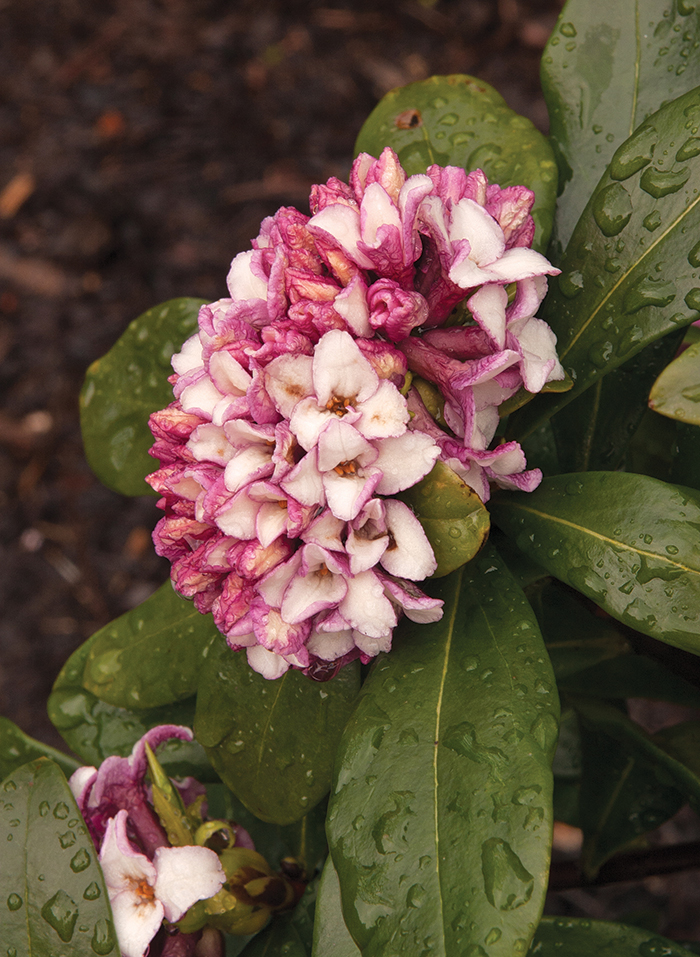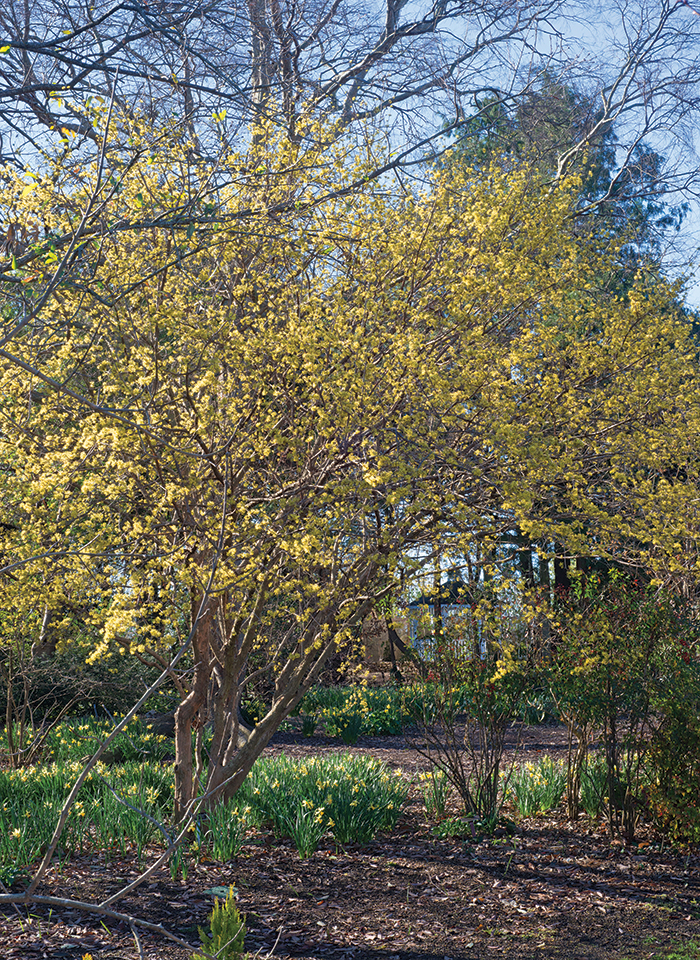If I told you I will be enjoying dogwoods in full flower this winter, you might think: (1) I’m still gulping spiked eggnog leftover from the holidays; or (2) some mad plant breeder has been tinkering with dogwood genes.
Neither is the case. Instead, I have become acquainted with the Japanese cornel dogwood (Cornus officinalis), a non-GMO, real deal of a beauty from the Orient that shakes off the shivers of cold weather to grace barren winter landscapes with unexpected blooms.
Now, about the blooms. Take images you have of blushing white, rounded, four-petal flowers and tuck them away, because the cornel dogwood’s blossoms don’t even remotely resemble the spring displays of a typical southern dogwood (Cornus florida). Imagine branches heavily laced with bright yellow — not white — sprite-like flowers that look like stars bursting. That’s the delightful show this unusual dogwood puts on in mid-February during mild winters, or more typically, in early March. This display is followed by small, oblong red fruit, which are usually eagerly gobbled up by birds.

Winter Daphne
Dogwoods are not the only woody ornamentals capable of putting on unexpected shows in the garden during these chilly times.
Many witch hazels (Hamamelis sp.) conjure up their fragrant blooms on the coldest of days, as do the aptly named wintersweet (Chimonanthus praecox) and winter honeysuckle (Lonicera fragrantissima). Ditto for the perfumed blossoms of two small evergreens: sweetbox (Sarcococca sp.) and winter daphne (Daphne odora).
The cornel dogwood is a small, deciduous tree with a semi-open habit. It will top out at about 20 to 25 feet and about as wide. Want less? Try ‘Kintoki’, a compact cutie that restrains itself to around 15 feet tall and wide.
A site that has well-worked, organically enriched soil will help get this alt-dogwood off to a good start. However, since the Triangle is on the southern end of its preferred planting zones, try to locate it where it will bask in morning sunlight but receive shady relief from summer afternoon heat.
Japanese cornel dogwood is not a one-off, eye-catching oddity. Its near-doppelganger is the cornelian cherry dogwood (Cornus mas) from southern Europe with similar displays of small yellow flowers and red berries. The J.C. Raulston introduction ‘Spring Glow’ is generally the most common cultivar to be found.
Speaking of finding, if you are interested in either of these seasonally strange dogwoods, get ready to do some searching. They aren’t common sights at local nurseries, so call your favorite garden centers for availability either from them or their wholesalers.
Online ordering is an option, but to make the search easier, include cultivar names (‘Kintoki’ or ‘Spring Glow’). I have found stocks vary seasonally, so if you don’t first succeed, keep trying — these beauties are worth the hunt!
In February
Cut back monkey grass (Liriope sp.) to about 3 to 4 inches above ground with a string trimmer or, for faster, more even results, a lawn mower.
Got fescue? The middle of this month is a good time to apply a pound of nitrogen fertilizer per 1000 feet of lawn to jump-start the spring growing season to come.
Thinking about adding a birdbath to your landscape? To prevent predators such as cats and snakes from setting up stalking stands, don’t tuck it too close to bushy shrubs or small trees.
- Explore the Arts
- Knowledge and Inspiration with the Fuquay-Varina Arts Council
- Flair for the Dramatic with Stageworks Theatre
- Strike Up the Holly Springs Community Band
- The Vollis Simpson Whirligig Park in Wilson
- The Dogwoods of Winter
- Laurel Bar + Food at Cellar 55
- Art in the Ordinary
- Art & Education
- Woman At Work
- In Healing Color
- Moonlight Excursion Baltic Porter from Mason Jar Lager Company
- FVM’s 10 Hottest Spots in Fuquay-Varina & Holly Springs







